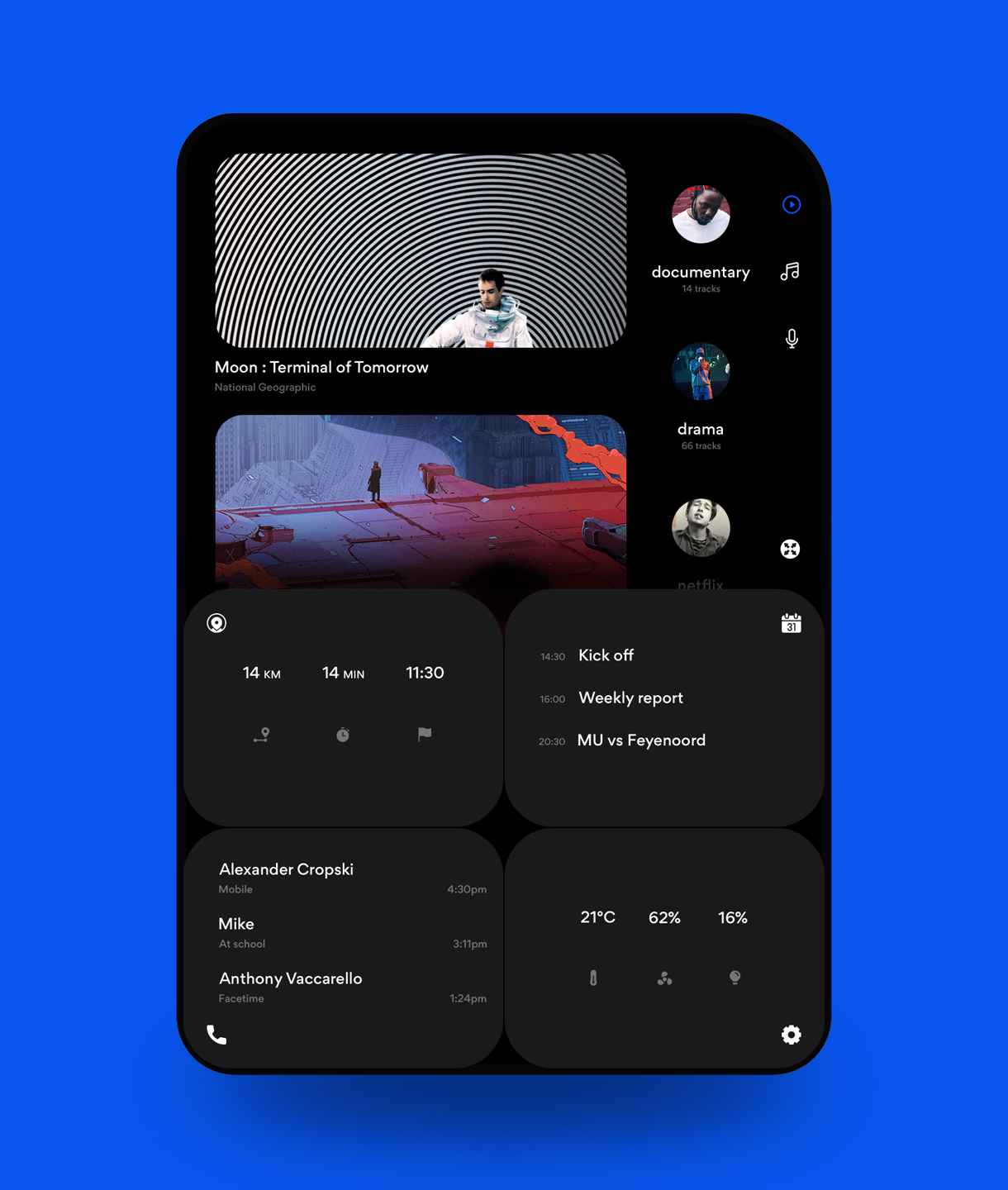AUTOMOTIVE
INFOTAIMENT SYSTEM
POLESTAR X
A conceptual vision of the infotainment system for level 5 autonomous vehicle.
The objective was to develop a novel market-oriented solution and ensure that it effectively enhances the well-being
of end-users. The project employed a combination of design thinking
and human-centered design methodologies as a holistic approach.

KEY INSIGHTS
The mobility of the future will be much easier, more flexible and more individual for users. The car of the future will be used and shared "On demand” The increasing penetration of autonomous vehicles will have a very positive impact on sharing concepts. Asia could become the leading market for the transformation of the automotive industry. Younger, technically savvy generations will play a key role in driving the transformation of the automotive industry.
PRINCIPLES
Minimalistic interface: The interface should be simple and easy to understand,
with minimal distractions that could interfere with the driving experience.
Consistent design language: A consistent design language should be used throughout the system,
including typography, color palette, and layout, to provide a cohesive user experience.
Clear hierarchy of information: The system should have a clear hierarchy of information,
with the most important and relevant information displayed prominently and less important
information presented in a secondary manner.
Gestural and voice control: The system should have a combination of gesture and voice controls,
allowing users to easily navigate and interact with the system without having to physically touch it.
Personalization: The system should be personalized to each user's preferences, such as music, news,
and entertainment sources, and provide relevant recommendations based on their previous choices.
Real-time feedback: Real-time feedback, such as haptic feedback, can provide users with a more tactile
and immersive experience, while also increasing the system's usability.
Contextual information: Contextual information, such as weather, traffic conditions, and upcoming points of interest,
should be provided to users to enhance their overall driving experience.
Accessibility: The system should be accessible to all users, including those with disabilities or impairments,
and provide features such as text-to-speech and larger fonts.
Integration with other systems: The system should integrate with other systems in the vehicle,
such as climate control and lighting, to provide a more seamless and holistic user experience.
DESIGN PROCESS
Requirements, Focus Groups/Surveys, User Personas, Competitive Analysis & Discovered Features, User Journey Map, Ideating,
User Flow, Information Architecture, Screens Map, Wireframes + Interaction Design, Prototype, User Testing,
Key Visuals, Visual Design, Design System.

SEATS LAYOUT x SCREENS
Designing an automotive in-car experience is rather different from other types of digital products.
Our solution required an interface that would be attuned to immensely diverse needs of users and solve potential problems seamlessly.
Layout separated into 5 parts – main focus area (50% of full screen) and four secondary screens (12,5% of the full screen).
Users can shift content between the areas to put more focus on a specific feature.
For feedback of voice interaction there is a visual appearance of an AI-based voice assistant in the center of the screen.
Hardware-wise this is just a normal touch screen. To minimize influence of the shaking effect which you can experience
by using your mobile device in public transport, traffic, or on low-quality roads, it has a touch bar screen on the top right corner side
to emulate the scroll wheel controller as old good Blackberry devices had before and back button.
ASSISTANT
One of the one important aspects of in-car experience is the advanced artificial intelligence. System is capable of learning the preferences of the user—climate control, music preferences, etc. and give suggestion such as optimal route or daily schedule planning by managing your calendar and setting reminders. Onboard system is also syncing with user’s personal mobile device and user still in control of amount of data to share with AI. We paid a lot attention for conversational design, so user can access all functionality by voice or text.



42%
of the mileage driven in Europe could be
covered by autonomous vehicles in 2030



62%
Of consumers are willing to submit data to AI
to have better experiences with businesses



Get in touch
— ivan@stoilovskikh.com